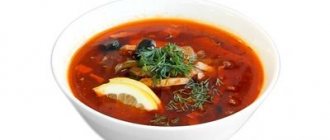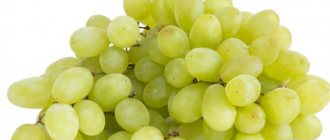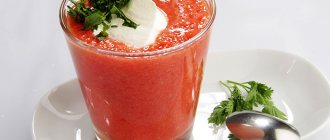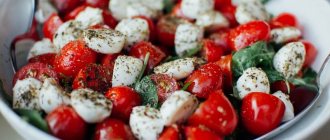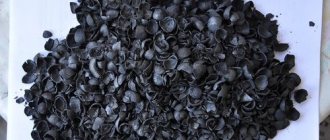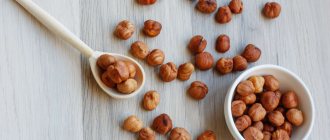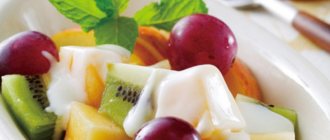Many people are interested in the calorie content of various foods for various reasons. These are sports, diets, proper nutrition and other factors. It would seem that such a concept as calorie counting does not apply to fruits and berries. After all, in fact, you can’t even eat enough of these fruits. But some fruits can contain a lot of calories and even harm your figure. Plum is a fruit that has gained a very controversial attitude towards itself. Should know plum calories per 100 grams to understand whether you need to include this fruit in your diet and how often to do it. If you want to know about all the benefits of this fruit, then you should read this article.
Energy value
The common blue plum, which is the most common variety of the plant, is one of the lowest-calorie fruit crops. The calorie content in 100 grams of fresh product with a stone is 42. This is approximately 3 fruits, so in 1 piece. contains 14-15 calories.
This indicator varies depending on the type of crop:
| Category | Calorie content, kcal per 100 g of product |
| yellow plum | 43,5 |
| Black plum | 45,2 |
| red plum | 46 |
| Prunes (dried plums) | 255 |
The content of BJU and the nutritional value of the crop is presented in the table:
| Meaning | Indicator per 100 g of product |
| Squirrels | 0.8 g |
| Fats | 0.3 g |
| Carbohydrates | 9.6 g |
| Organic acids | About 1 g |
| Alimentary fiber | 1.51 g |
| Mono- and disaccharides | 9.45 g |
| Water | 86.29 g |
Dried
Dried plums - prunes - are among the most common and healthy dried fruits. All useful substances are retained in dried plum fruits, but in a more concentrated content than in fresh ones. Therefore, the calorie content of plums after drying increases to 231–256 kcal/100 g.
Prunes are made from fleshy and moderately juicy drupes, usually of the “Hungarian” variety. They are always dried entirely in two versions - with or without a stone, which does not affect the characteristics or taste, but changes the calorie content per 100 grams, since it affects the weight of the final product. Thus, pitted prunes contain 256 kcal/100 g, and the calorie content of dried plums with pits is 231 kcal/100 g. The big advantage of any prune compared to many other dried fruits is that they are rarely glazed with syrups, since their own taste of such berries is expressed quite clearly.
Prunes contain organic acids, anthocyanins, flavonoids, pectins, fiber and a vitamin-mineral complex, just like fresh berries. But due to the evaporation of liquid and shrinkage of the pulp, their quantity in 100 g of prunes increases in the same way as the calorie content, mainly due to an increase in the number of complex carbohydrates. Eating prunes has a positive effect on the body and quickly improves the functioning of the gastrointestinal tract.
Prunes belong to the group of antioxidant products and have properties important for human health:
- produces a general strengthening effect;
- raises tone, increases performance;
- prevents the development of malignant neoplasms;
- improves the condition of gallstone disease;
- has a mild diuretic and laxative effect.
The high content of antioxidant components is due to the presence in prunes of many special phenolic compounds - hydroxycinnamic acids, which in turn contain chlorogenic acids. It is these substances that very effectively remove free radicals from the body.
Despite the increase in calorie content of plums after drying, due to many beneficial properties and the ability to quickly saturate in small quantities, prunes are often included in diets for weight loss and as a basis for fasting days. In addition, prunes are actively used in regular meals as part of various dishes, both in desserts and in combination with meat or poultry. It makes their fibrous structure softer and gives them a special taste and delicate aroma. It is also added to compotes, fruit salads, filling for baked goods and as a component of puddings or casseroles. But the healthiest thing is prunes as a healthy snack in combination with other dried fruits, nuts or dairy products. Even by increasing the total calorie content of the composition, such an additive makes them as healthy as possible.
When purchasing, it is recommended to choose slightly shiny blue-black fruits with a stone, not too dry and elastic to the touch. It is better to discard prunes that are brown or have obvious spots on the surface, since such signs appear when dried using chemicals. The composition and calorie content of plums after such processing may not correspond to the declared indicators.
Composition and properties
The benefits of fruits for the health of the body are due to the chemical composition of plums; the most significant components are vitamins such as:
- B vitamins;
- tocopherol;
- pantothenic acid;
- retinol;
- riboflavin;
- thiamine;
- ascorbic acid;
- a nicotinic acid;
- pyridoxine;
- vitamin PP;
- folic acid.
Plum is considered a crop with one of the highest levels of various nutrients, which include:
- starch;
- cellulose;
- organic acids;
- ash;
- mono- and disaccharides.
The product contains a significant amount of various macro- and microelements, which include:
- manganese;
- silicon;
- nickel;
- potassium;
- fluorine;
- copper;
- zinc;
- iodine;
- calcium;
- cobalt;
- chlorine;
- chromium;
- molybdenum;
- iron;
- sodium;
- sulfur;
- phosphorus.
The most beneficial properties of plums for the human body include:
- prevention of premature aging of tissues;
- removal of waste, radionuclides and toxins;
- prevention of heart attack, arthritis, cancer, asthma;
- laxative effect;
- fight against chronic intestinal obstruction;
- purification of blood from “bad” cholesterol;
- increasing visual acuity, improving eye health;
- control over the functioning of the heart muscle;
- intensification of metabolism;
- improving memory, accelerating thought processes;
- fight against obesity, help with weight loss;
- preventing the development of skin diseases;
- diuretic effect;
- regulation of the functioning of the digestive system;
- strengthening the immune system;
- prevention of the development of varicose veins, atherosclerosis, thrombophlebitis;
- unblocking of blood vessels, intensification of blood flow;
- reducing the risk of heart attacks;
- control over the male and female hormonal environment.
Plum is especially recommended to combat the following diseases and problems with the body:
- fever, increased body temperature;
- weakened immune system;
- liver dysfunction;
- diseases of the digestive system;
- poor appetite;
- disrupted hormonal levels;
- constipation;
- seasonal vitamin deficiency;
- secretion of a significant amount of bile and associated diseases;
- the presence of waste and toxins in the body;
- heart muscle diseases;
- excess weight;
- inflammation of the oral cavity;
- poor vision;
- swelling of tissues and limbs.
Features of application in cosmetology
Masks are made based on juice and pulp. The main value of the fruit is a large amount of vitamins and minerals. Used as a nutritional component. To enrich the beneficial properties for the skin, combine with other ingredients. To prepare a folk cosmetic product, fresh ripe red Skorospelka plums are used.
- Masks for dry skin
Used to soften, tone, nourish, and moisturize the skin. The easiest option is to peel the plums, puree the pulp, and apply it to your face for 20 minutes. You can enrich the recipe with an egg. For dry skin, use yolk. Mix with 1 tbsp. spoon of plum juice or pulp. Leave on face for 20 minutes, rinse with warm water.
- Masks for normal skin
Plum puree is mixed with butter, applied to the skin, and left for 15 minutes. The second version of the mask: mix the pulp with honey, cottage cheese, and yolk. To stir thoroughly. Apply for 20 minutes. Wash off with warm water.
- Masks for oily skin
The easiest option is to mix plum puree with egg white. Apply to clean skin and leave for half an hour. This mask removes oily shine, cleanses pores, and normalizes the functioning of the sebaceous glands. It also refreshes, tones and nourishes. You can use plum juice. Moisten cotton pads and wipe your face instead of lotion.
You should not use plum masks regularly. It is enough to carry out 2-3 procedures per week. Do not use Skorospelka if you are prone to allergies or individual intolerance to the components.
Benefits for men
Men are much more likely than women to suffer from high blood cholesterol and cardiovascular diseases caused by this problem. Thanks to the consumption of plum fruits, it is possible to unclog the blood channels and free them from plaques. This avoids the risk of developing thrombosis, atherosclerosis, etc.
If you abuse alcoholic beverages, plum helps maintain the normal condition of the liver and prevent its damage by ethanol. Also, at the same time, excess bile is removed.
Plum has a positive effect on the psycho-emotional environment of a man. This is especially important for those patients who regularly face stressful situations. To calm and restore sleep, it is enough to eat 5 fruits per day.
The plant allows you to maintain normal blood pressure and prevent it from jumping, reducing the risk of strokes and heart attacks. The fruits have a positive effect on the condition of the intestines, improving its microflora and peristalsis.
How to use correctly and in what quantities
According to experts, a healthy person is allowed to eat 1 kg of plums per day. In the presence of chronic diseases, the daily consumption rate is reduced.
- Gastritis with high acidity . During remission, 5 ripe fruits or a glass of juice diluted with water in a ratio of 1:2.
- Pancreatitis. Four ripe fruits without peel. Eating on an empty stomach is prohibited.
- Gout . After meals, 4 ripe plums are allowed.
- Diabetes. You are allowed to eat no more than 150 g of fruit per day.
Currently reading: What is the difference between the Peach plum variety
Plums should not be eaten daily or in large quantities. Even in a healthy person, fruits cause diarrhea and indigestion. Moreover, if you experience constipation, it is enough to eat 5 plums to get rid of it. It is recommended to dilute plum juice with water in equal proportions, and in the presence of gastrointestinal diseases, the proportions are kept at 1:2. It is not recommended to eat plums on an empty stomach, in the morning on an empty stomach, or immediately before bed. The best option is 30 minutes after the main meal.
Plum for women
Fruits can prevent premature aging of the body. The product is often included in various masks, peelings, and lotions used to restore the skin.
The plant is useful for women who pay attention to their figure. Eating several plums every day helps cleanse the body and prevent excess weight.
Fruits contain a significant amount of antioxidants that can suppress the negative effects of various toxic substances (for example, radionuclides). This helps prevent the risk of developing cancer of the mammary glands and uterus.
Plum is used to accelerate skin regeneration. The pulp of the fruit is used to lubricate cuts, wounds on the skin, marks from acne and pimples.
The product contains coarse dietary fiber, which accelerates the metabolic process. As a result, food is absorbed much faster and is not deposited in unwanted areas.
The benefits of fruit for the female body
Women can eat plums without fear or harm to their figure and saturate their body with vitamins. In addition, plum is used in alternative medicine and has certain benefits for women.
Namely:
- breast cancer prevention;
- eliminating constipation in pregnant women. During pregnancy, constipation is a common problem for many women. Most expectant mothers try not to take various medications during this period. Plum can come to their aid to relieve constipation. A couple of fresh fruits or 4 dried plums per day is enough;
- eliminating swelling is useful for pregnant women, since gestosis is very common among them. Plum contains potassium, which allows you to remove excess water from the body, thereby reducing swelling.
Benefits for pregnant women
Eating plums during pregnancy has a positive complex effect on the body of the expectant mother due to the content of a number of useful components:
| Ingredient | Health effects |
| Folic acid | Help in the full formation and development of the fetus |
| Potassium | Removing excess fluid from the body, preventing swelling of the limbs |
| Alimentary fiber | Stimulates the functioning of the gastrointestinal tract, prevents discomfort and constipation |
| Ascorbic acid | Reducing the risk of developing infectious diseases that are extremely undesirable during pregnancy |
Regular consumption of fruits helps bring blood pressure (BP) back to normal. It should be noted that high blood pressure is very harmful for the baby.
The intake of plums for pregnant women may be limited or prohibited due to individual intolerance. When consuming too many fruits, expectant mothers sometimes experience side symptoms such as:
- flatulence;
- diarrhea;
- stomach upsets.
You should also not eat unripe fruits to avoid unpleasant pain in the gastrointestinal tract.
After giving birth, a young mother is advised to refrain from eating plums throughout the entire lactation period. Otherwise, there is a risk of developing constipation and diarrhea in the baby.
Canned
Fresh plums are not only dried, but also preserved in various ways, the most common of which are pickling, making compote and jam. Depending on the method by which plums are processed, the calorie content per 100 grams of product can vary significantly - from 21 to 288 kcal/100 g. Compote has the lowest energy value, especially when prepared with a minimum amount or no sugar at all. The average calorie content is for pickled plums, and the highest is for plum jam.
Pickled
Pickling of plum fruits is carried out using a concentrated marinade, which contains a lot of sugar. Therefore, the calorie content of plums after such processing increases slightly - up to 63.9 kcal/100 g. Since the fruits are not boiled during the cooking process, but are only steamed with boiling water, up to 80% of all valuable substances remain in them.
Eating pickled plum drupes in moderation has a beneficial effect on health, since in addition to the beneficial properties of the fruit itself, the healing qualities of enzymes and bacteria formed during the fermentation process are added. The results of this impact are manifested in the following:
- digestion processes are activated;
- pathogens present in the intestines are eliminated;
- the movement of food through the digestive tract accelerates;
- all unnecessary and harmful substances are removed from the gastrointestinal tract;
- blood vessels are strengthened;
- blood pressure is normalized, the development of hypertension is prevented;
- maintains normal water-salt balance, promoting the removal of excess salts and excess fluid;
- a mild diuretic and laxative effect is produced, constipation is eliminated.
These properties and the low calorie content of pickled plum fruits make it possible to include them in any diet with a reduced fat and carbohydrate content to prevent swelling and constipation. In addition, another reason for using pickled berries during weight loss is the ability to regulate metabolism, preventing the body from slowing down the metabolism and switching to saving mode, in which weight loss stops. Consuming such a product during a diet will help maintain metabolic processes at normal levels, which will allow for better weight loss results.
Compote
The calorie content of compote plums depends on the amount of sugar used in production. Plum compote, produced industrially according to GOST, contains 96 kcal/100 g. When harvesting at home, the calorie content of plums can be significantly reduced by reducing or completely removing granulated sugar from the recipe. In the absence of this component, the result is a drink with a pure sweet and sour plum flavor, containing only 21 kcal/100 g.
This product has a beneficial effect on the body:
- activates the activity of the stomach and intestines;
- fights cholesterol plaques on the walls of blood vessels;
- helps cleanse the kidneys;
- improves the condition of the cardiovascular system;
- calms the nervous system;
- reduces stomach acidity, eliminates heartburn.
Important! Sugar-free plum compote is a negative calorie product, that is, it supplies less energy than is expended on its digestion. The drink also has a mild diuretic and laxative effect, which further promotes weight loss.
Jam
Plum jam is distinguished by its sufficient thickness due to the pectins contained in the berries, as well as its wonderful taste and aroma. However, as a result of long-term heat treatment and the addition of a significant amount of sugar, which is provided for by the technology for preparing such a product, a significant part of the valuable substances is lost, and the calorie content of the plum increases several times - on average to 288 kcal/100 g.
Therefore, jam is not very suitable for dietary nutrition for the purpose of losing weight or improving health. In some diets, it is allowed to be introduced as an additive to cereals or cottage cheese, but in minimal quantities, at which there is no point in talking about benefits. But as a healthy dessert, plum jam can be an excellent alternative to unhealthy sweets or a healthy component of the diet without the need for weight control or weight loss. It is especially recommended to give it to children, but in small portions, so as not to provoke an upset stomach and abdominal pain.
Plum for children
Plum contains the entire complex of organic acids, mineral compounds and vitamins that babies need for full growth and development. In spring and autumn, during periods of the spread of colds, children are recommended to consume fruits and compotes made from them to protect the body and increase immunity.
Taking plums allows for a gentle cleansing of the child’s gastrointestinal tract, improves appetite, and normalizes body weight if it is in excess. As a result, the product is especially recommended for babies whose stomachs are affected by helminths and other parasites.
When treating a child with medications, it is necessary to give him a decoction of prunes. This will improve the effect of medications and at the same time reduce the content of toxins in the child’s body.
Beneficial properties of red plum
Fresh, dried, or boiled plums have pronounced laxative properties. Actively increase the secretion of gastric juice and speed up digestion. It is recommended to use for gastritis with delayed formation of hydrochloric acid, intestinal atony, constipation.
Currently reading: Does Chinese plum help with weight loss and colon cleansing?
Useful properties of plums:
- stop the inflammatory process in the digestive organs;
- remove toxins;
- cleanses the intestines of toxins;
- soften stool;
- normalize liver function;
- lower blood pressure;
- remove cholesterol, salt deposits, excess fluid;
- neutralize the effect of radioactive substances;
- improve heart function, strengthen blood vessels;
- increase the level of hemoglobin in the blood;
- strengthen the immune system, increase the body's protective functions.
An extract from plum pulp is included in the laxative medicine “Kafiol”. Traditional healers recommend drinking decoction, compote, and eating fresh fruit for constipation. In oriental medicine, fruits and drinks prepared from them are used to treat gynecological diseases. An effective remedy for threatened pregnancy failure and irregular menstrual cycle.
Use for weight loss
Fruits have the ability to remove salt and excess water from the body, which makes it possible to break down fats. Plum controls the metabolism of carbohydrates in the body, so that glucose does not accumulate in the waist and hips. Carbohydrates are converted not into folds of fat, but into energy.
Due to the powerful laxative effect of plums, it is possible to carry out a comprehensive cleansing of the body from toxins and waste. At the same time, metabolic processes become more intense.
There are several types of plum-based diets. The fastest way is to consume 1 kg of fresh plums per day for 2 days. The fruits must be washed down with plenty of water.
Another option involves eliminating salty, fatty, fried, sweet and other undesirable foods from the diet. Before consuming permitted products, you must drink 200 ml of plum juice.
General characteristics of the fruit
In the central Russian region, “Skorospelka red” is one of the most popular varieties. Trees of medium height with an oval dense crown. A winter-hardy, drought-resistant crop gives a good harvest on irrigated, fertilized soils. The variety appeared as a result of cross-pollination of the Vengerka plum.
The fruits are round, egg-shaped, weighing about 20 g. The color of the flesh is yellow with a pinkish tint. The peel is raspberry or purple with a blue tinge. Ripe plums have a heterogeneous color. The fruits are moderately juicy with noticeable fiber.
The skin is thin, easily removed, and cracks when exposed to hot water. The stalk is easily separated from the pulp. The stone is medium-sized and makes up 6% of the fruit's weight. Ripe fruits are juicy, sweet and sour with a delicate aroma. As they mature, they fall off. They are consumed fresh and used to prepare drinks, sauces, jams, and other culinary masterpieces.
Eating plum pits
The product is especially in demand in oriental medicine; a number of medicinal products are prepared on its basis. To combat cough, bronchitis, and cancer, an alcohol tincture is prepared.
The seeds are used to make vegetable and essential oils, which are widely used in cosmetology. These products have powerful antioxidant properties. They have a tart aroma, similar to the smell of bitter almonds.
Plum bone-based products should be consumed with caution. They contain amygdalin, which, together with enzymes of the gastrointestinal tract, forms hydrocyanic acid. This compound in significant doses is extremely dangerous for people and often leads to death.
The intake of plum seeds must be agreed with your doctor.
Harm and contraindications of Skorospelka
The beneficial properties of red plums can become dangerous if consumed incorrectly or excessively. Fruits are not given to infants; portions are limited to children. In the absence of contraindications, plums should be present in the diet, but its systematic use is not encouraged. Eating a large amount of fruit leads to indigestion, diarrhea, increased acidity, and exacerbation of gastrointestinal diseases.
Eat plums, dishes, and drinks made from them with caution when:
- gastritis with high acidity;
- intestinal dysbiosis;
- tendency to diarrhea;
- low blood pressure;
- peptic ulcer of the stomach, intestines;
- increased amount of potassium in the body;
- diabetes mellitus
It is strictly forbidden to eat red Skorospelka if you have an individual intolerance to the components or a tendency to allergies. Fruit consumption is allowed in moderation in the first and second trimester, but should be avoided in the last trimester. The norm is limited or completely excluded from the diet when breastfeeding.
Daily norm of plums
Typically, the daily level of consumption of plum fruits is calculated with the participation of the attending physician. This is due to the fact that this indicator in most cases is strictly individual and depends on the patient’s age, lifestyle, gender, etc. Plum has a powerful laxative and diuretic effect, which may be undesirable for working people.
Most often, the daily intake of plums for an adult healthy person is 250 grams. During pregnancy, it is not recommended to consume more than 4 fruits per day. Patients with chronic diseases should consult a qualified healthcare professional to determine this indicator.
Plum for diabetes
The diet of diabetics takes on its own characteristics. People with this disease are allowed to include in the menu dishes and foods with a low glycemic index - 49 values, which has an effect on increasing blood sugar. Therefore, it is important for people with such a disease to know not the number of calories of this fruit, but its GI.
These are the following indicators:
- fresh fruit – 22;
- dried – 30;
- plum puree – 24.
Juices and nectars have a very high rate and are therefore not recommended for diabetics. They do not contain fiber, which could lower the glycemic index and prevent sudden changes in blood sugar levels. Therefore, fruits can be included in the diet for diabetes, but in limited quantities. The optimal number is 250 g per day.
Video
Recipe for dietetic plum jam Renclod
To make jam you will need freshly picked fruits. Their skin should be moderately elastic, and their color should be amber. It is better to make dessert from slightly under-ripe fruits than from too ripe fruits. Previously, we looked at the benefits of yellow plum, whose calorie content makes it a very beneficial product for those who are on a diet.
So, for 1 kg of yellow plums you will need 0.5 kg of sugar, one lemon, a cinnamon stick, one clove, two star anise, 250 ml of clean water. The fruits must be washed several times in cold water. Then pierce each of them with a toothpick in several places.
The syrup is boiled in an enamel pan. To do this, add sugar to the water and bring to a boil over low heat. Cooking time – 10 minutes. The plums are poured into the syrup with the heat off. They need to be mixed thoroughly and left for a day, covered with a lid. After 24 hours, the plums need to be removed from the pan. Boil the syrup again and pour over the fruit for a day. Squeeze the juice of one lemon. After the time has passed, bring the syrup together with the plums to a boil, but with the addition of lemon juice and spices. The final cooking process will take no more than 15 minutes. The fruits should acquire a transparent color and settle to the bottom. The jam is ready!
To prevent nectar sweetness from being stored for a long time after opening, you need to take small glass jars for twisting. They should be pre-washed and sterilized. After the jam is sealed, it is placed in a cool place. Thanks to the presence of lemon juice and spices in the recipe, cooking time is kept to a minimum. The dessert retains the maximum amount of benefits.
Yellow plum has an exquisite taste and has a beneficial effect on the human body. The sunny fruit, introduced into the diet, will not only become a delicious dessert, but will also improve health.
Harvesting and storage of Skorospelki plums
It is recommended to pick fruits 5 days before ripening. In this case, they will already be quite juicy, but will not lose their elasticity. When buying at the market, you need to choose fruits with intact skin, dense, with a blue coating.
Fresh plums are stored in plastic bags with holes for air circulation on the bottom shelf of the refrigerator or in a special department for vegetables and fruits. Early ripening retains its presentation and taste during such storage for about 20 days.
Currently reading: How to dry plums at home
Red plums are dried and preserved for the winter. They make jam, jam, compote, and make plum liqueur. Dried fruits are stored in cardboard boxes, paper or fabric bags away from direct sunlight in a dry place. Shelf life – 2 years. You should periodically check for the presence of pests - moth caterpillars.
- Drying early ripening in the oven
Fruits need to be washed, dried, and seeds removed. Place parchment paper on a baking sheet. The plums are laid out skin side down. Heat the oven to 50 degrees Celsius and place the fruit there for 5 hours. Periodically open the door and ventilate. Take out the baking sheet and leave to cool completely. Turn over the plums. Heat the oven to 70 degrees Celsius, place the baking sheet for 7 hours. Allow to cool again. At the last stage, the cabinet is heated to 80 degrees, the fruit is sent for 3-4 hours until fully cooked.
- Freezing
The plums are washed and dried. Then you can proceed as follows - squeeze the juice, pour it into ice trays; send whole to freezer; remove the seeds and freeze the pulp. The preparations are used for preparing smoothies, compote, and cosmetic masks.
- Jam
The easiest option is to cover the prepared seedless fruits with sugar for 2 hours. Place on the stove, stir, bring to a boil, remove. Leave to cool. Return to the heat and cook until tender. Pour into sterile jars and roll up the lids. Store in a pantry, cabinet, basement.
How to choose, collect, consume and store plums?
- Plums are harvested from late August to early September only in dry weather.
- The fruits on the tree ripen gradually, so the plum is collected in several stages, but without waiting for it to crack.
- At a temperature of 0 degrees in sealed plastic bags, properly collected fruits can remain fresh for up to 2 months.
- For long-term storage, plums are dried or frozen.
- Cracked overripe plums can be stored in the refrigerator for no more than three days.
- Plum goes well with other fruits and dairy products.
